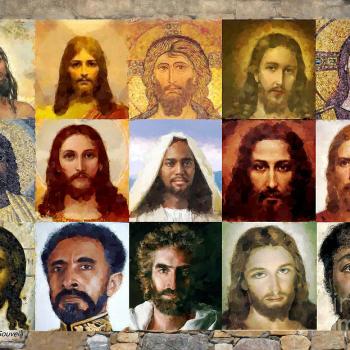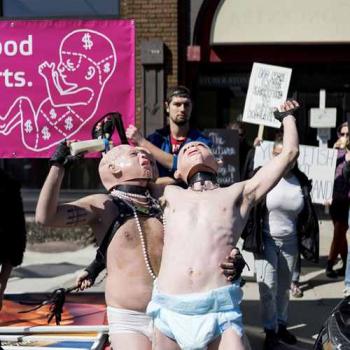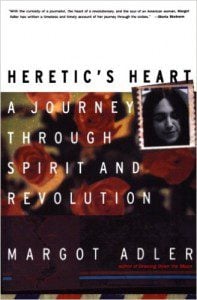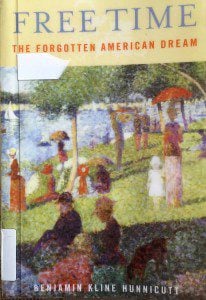Note: This post is part of our Lenten study of Joyce Rockwood Hudson’s book Natural Spirituality: Recovering the Wisdom Tradition in Christianity. Links to the previous installments in this series on “Jungian Spirituality” will be included at the end of each post.
18 Moses said to God, “Show me your glory, I pray.” 19 And God said, “I will make all my goodness pass before you, and will proclaim before you the name, ‘I Am’”…. 20 But, God said, “You cannot see my face; for no one shall see me and live.” 21 And God continued, “See, there is a place by me where you shall stand on the rock; 22 and while my glory passes by I will put you in a cleft of the rock, and I will cover you with my hand until I have passed by; 23 then I will take away my hand, and you shall see my back; but my face shall not be seen.”
Exodus 33
This week as I was preparing this sermon on synchronicity, which was Carl Jung’s term for “meaningful coincidences,” I had a series of synchronicities related to the concept of synchronicity. Or maybe it was a mere coincidence, not a meaningful coincidence? The difference is not always clear, and I’m not sure there is ever a way to move from a subjective, personal sense that a series of events seems to be a synchronicity to a definitive, objective confirmation that a series of events is a meaningful coincidence. Nevertheless, I will at least share with you my experience.
Part of my motivation for this sermon series on Jungian spirituality is that a Jungian perspective on archetypes, the Collective Unconscious, dreamwork, and synchronicities is underrepresented in our modern,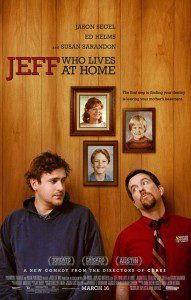 technology-center world. But on Monday, I received an email newsletter from the Spirituality & Practice website, which was highlighting this week — of all possible topics — a bunch of books, films, and articles on synchronicity, including the new Duplass brothers film Jeff, Who Lives at Home, which was released last weekend.
technology-center world. But on Monday, I received an email newsletter from the Spirituality & Practice website, which was highlighting this week — of all possible topics — a bunch of books, films, and articles on synchronicity, including the new Duplass brothers film Jeff, Who Lives at Home, which was released last weekend.
I had heard about this film the previous week, when it was announced on one of my favorite podcasts Filmspotting that they would be reviewing it this week. I wasn’t that impressed with their description of the film and didn’t plan to see it. But then I received that e-mail newsletter which was not only about synchronicity in general, but also included an article that synchronicity is a major theme in the new film Jeff, Who Lives at Home. I thought to myself, “Fine. I’ll bite.”
I went to see the movie on Wednesday. The critical reviews so far have been lackluster, and I don’t recommend that you rush out to see it. You should also be forewarned that it is “Rated R” for profanity and pot smoking. If you do end up seeing it at some point, I promise not to spoil the film anymore than the trailer does, but allow to give you a few descriptions:
Watch the trailer on YouTube:
https://www.youtube.com/watch?v=xrDf6Ih8kHw
The film stars Jason Siegel as the titular “Jeff, Who Lives at Home.” And indeed he is a thirty-something year-old-man, who lives at home with his mother played by Susan Sarandon. Jeff is obsessed with the 2002 M. Night Shyamalan film Signs.
In an early scene, someone mistakenly calls Jeff’s house asking to speak to “Kevin.” Jeff answers that, “There is no Jeff here.” But after hanging up, he begins to wonder if perhaps the name Kevin is a ‘sign,’ and perhaps “There are no wrong numbers.” As you may be able to guess, the name “Kevin” leads Jeff though a chain of adventures culminating in an unexpected confluence of events at the end of the movie.
The film’s point of view is that there are signs, patterns, and synchronicities that we should notice and respond to. On one hand, this story is merely fiction. On the other hand novelist Milan Kundera has said, “It is wrong…to chide the novel for being fascinated by mysterious coincidences…but it is right to chide humans for being blind to such coincidences in their daily life. For we thereby deprive our life of a dimension of beauty.”
More importantly than the ways that fiction does and does not represent truths about real life and more important than the plot of this particular film is perhaps the question, “Is it merely a coincidence that in the same week I planned to preach about the somewhat obscure Jungian concept of synchronicity that I would both receive an e-mail newsletter about synchronicity and that a major film studio would release a film with synchronicity as a major plot element?” I certainly did not know about that either of these things would happen this past week, when I first outlined this sermon series more than two months ago.
As we have said before in this series, we are entering murky waters. If we aren’t careful, we can slip into some form of magical thinking such as the facile and simplistic assertion that, “Everything happens for a reason.” In contrast, a Jungian understanding of synchronicity is perhaps, at minimum, inviting us to pay attention to the patterns and themes in your life: these motifs may be a call to integrate some aspect of your personal unconscious or the Collective Unconscious into your conscious, waking life. And integrating the unconscious, not-fully-realized, and shadow aspect of ourselves into our conscious, waking life is a large part of the journey toward wholeness and spiritual growth.
Joyce Rockwood Hudson, the author of the book we’ve been studying, Natural Spirituality: Recovering the Wisdom Tradition in Christianity, writes that synchronicities are “linked not by physical cause and effect but by meaning arising from the unconscious. Synchronicity does not deny or negate causality, but exists alongside it…. There [is] a nonrational element involved” (104-105). In other words, as powerful as the scientific method is for bringing us the Hubble Space Telescope, the Large Hadron Collider, the iPhone, the microwave, the CAT scan, and some many other wonders, the claim of Jungian spirituality is there is more to the Universe and to our personal experience than can be seen through the lens of science and comprehended by human reason.
I think that this insight parallels some of the deep truth underneath our scripture text for this morning. Just as Moses did not have the capacity to perceive or comprehend the fullness of God’s glory (only God’s backside), so too — despite our immense modern scientific knowledge — there remains much more about the universe that we do not know from our limited, human perspective.
At the same time, it is important to remember that the title of Joyce’s book on Jungian spirituality is not “Supernatural Spirituality,” but “Natural Spirituality.” Both she and Jung and not talking about God as some supernatural being who capriciously intervenes from time to time to disrupt the natural flow of cause and effect and to temporarily suspend the laws of physics. Instead, we are talking about natural spirituality that invites us to see that there more to this world than we normally comprehend. And Jung invites us to experiment in our own lives with the claim that through practices such as dream work and paying attention to synchronicities, we can catch glimpses of a web of meaning of which our conscious selves are typically unaware.
Joyce writes:
Our proper relationship to [synchronicities or to our dreams] is a dialogue, our own consciousness neither overrunning it nor being overrun by it…. We supply conscious intent and direction, while [dreams and] synchronicity supply encouragement, hints, or corrections. We weigh these suggestions and decide for ourselves what to think or how to proceed…. When we are open to [dreams and] synchronicity, life itself teems with the presence of God. (109)
So, having reflected on some non-fictional and fictional synchronicities as well as on some of the theoretical background to synchronicities, let me share with you two more true stories of possible synchronicities. The first is from my own life. The second is from Recollections, the autobiography of Viktor Frankl, the Holocaust survivor, psychiatrist, and author of the bestselling book Man’s Search for Meaning.
From the many synchronicities I have experienced in my life, in light of preparing to graduate in May with my Doctor of Ministry (D.Min.) from San Francisco Theological Seminary, perhaps it is appropriate to share that back in spring 2009 I was talking with the director of the D.Min. program about whether I could start work on my dissertation even though I wasn’t planning to finish the coursework for my degree until summer 2010. He paused for a few moments to consider the options, and surprised both himself and me by offering an unorthodox course of action: “If you can come out here for ten days this summer and take an intensive course, I’ll work with you personally to get your dissertation topic approved.” Normally, you have to attend intensive classes for a full six weeks, during which your dissertation topic is approved. But his offer was complicated by the fact I had already been in San Francisco for three weeks a few months earlier finishing the coursework for my low-residency Diploma in the Art of Spiritual Direction. I normally would not have been able to return to the Bay Area so soon, but in a potential synchronicity, I was already in the midst of planning an Arts and Cultural trip with a group from my congregation at that time to, of all places, San Francisco. With a change in dates of only a week, I was able to come a few days early and complete the part of the coursework needed to begin working on my dissertation. Mere coincidence or meaningful coincidence?
Similarly, Viktor Frankl recounts in his Autobiography that one day he and his wife were walking through the streets of Vienna. They passed by a church they had long admired because of its Gothic architecture and were drawn in on a whim by some organ music they heard being played inside. But as soon as they entered the sanctuary, the music stopped, and the priest began preaching about — of all possible things — the godless writings of one Viktor Frankl. He writes [my emphasis]:
The priest preceded to tear my book to shreds. Later, I introduced myself, a bit worried that this encounter might give him a heart attack. He certainly had not expected that I would be present. How many minutes had passed from my birth up to that sermon, up to the point of our visit to the Votive Church for the first time? How minuscule the chance that I would enter at exactly the moment when the priest mentioned me in his sermon?
I think the only appropriate attitude to such coincidences is to not even try to explain them. Anyway, I am too ignorant to explain them, and too smart to deny them.
In the contemplative silence to follow, I invite to you be open to what this talk of synchronicity, mere coincidence, and meaningful coincidence may have stirred up within you. Do any memories of synchronicities emerge from your unconscious?
In the coming weeks, I invite you to be open and attentive to unexpected patterns in your life, meaningful coincidences, and your dreams. You may be surprised what you notice.
For now, I invite you to be still and listen….
Previous Sermons in this Series on “Jungian Spirituality for Lent”
- “Confronting the Unconscious: from Supernatural to Natural Spirituality” (Lent 1). Available at http://www.patheos.com/blogs/carlgregg/2012/03/confronting-the-unconscious-from-supernatural-to-natural-spirituality/. An excerpt: “We have to be extraordinarily careful about attributing causation to God and meaning to events. In particular, I am by no means promoting a variation of the harmful canard that, “everything happens for a reason.” But, at least for Joyce Rockwood Hudson, calling these two events “mere coincidences” did not adequately explain the powerful impressiveness of her personal experience. She increasingly had eyes to see and ears to hear “very personal and specific meaning” in events that would have previously seemed coincidental, random, and generic. In Jungian terms, Joyce was experiencing a “confrontation with the unconscious.” And when she examined these resonances between the inner and outer world, she found guidance, insight, and encouragement on her journey toward spiritual growth and greater wholeness.”
- WWJD? (“What Would Jung Do?”): Jungian Spirituality for Lent (Lent 2). Available at http://www.patheos.com/blogs/carlgregg/2012/03/wwjd-%E2%80%9Cwhat-would-jung-do%E2%80%9D-jungian-spirituality-for-lent/. An excerpt: “This scenario does not require or allow for any supernatural control of the weather. Rather, you are invited to consider if we sometimes unconsciously have access to additional level of reality that our conscious minds cannot typically perceive. The more you open yourself to noticing and learning from synchronicities during the day and your dreams at night, the more you may find yourself with breakthrough insights into how to grow toward greater spiritual maturity and personal wholeness.”
- A Dream Uninterpreted Is a Letter from God Unopened (Lent 3). Available at http://www.patheos.com/blogs/carlgregg/2012/03/a-dream-uninterpreted-is-a-letter-from-god-unopened/. An excerpt: “Part of what the writings of Carl Jung invite us to do is pay attention to synchronicities (“meaningful coincidences”) during the day and to dreams at night. The claim, which you are invited to test in the crucible of your own experience, is that the more attentive you are to synchronicities and dreams, the more you will be able to integrate your personal unconscious into your waking life and the more you will be in touch with the wisdom of the Collective Unconscious.”
Resources on Jungian Spirituality
- Sara Corbett, “Carl Jung and the Holy Grail of the Unconscious,” The New York Times (September 16, 2009). Available at https://www.nytimes.com/2009/09/20/magazine/20jung-t.html?pagewanted=all.
- Carl Jung, Memories, Dreams, Reflections: Jung’s autobiography is arguably the best, most accessible entry point into his writings, which can be difficult to read. The next best step is probably The Portable Jung (The Viking Portable Library), edited by Joseph Campbell. This sampling of Jung will help you discern where you may want to begin to dive into his Collected Works.
- Seedwork.org: a website filled with practical tools for listening to God’s Wisdom in many forms, including dream work, deep prayer, and meditation. Originally created under the auspices of the Episcopal Diocese of Arkansas. A primary site for gaining information about the expanding field of inner journey.
Notes
1 Joyce Rockwood Hudson, the author of our focal book, is the founder and director of the Natural Spirituality Program at Emmanuel Episcopal Church in Athens, Georgia. According to one reviewer, she takes the insights of Carl Jung’s (1875–1961) writings “out of the professional world of the analyst’s office into the everyday world of the laity in the local church. The book offers serious Christians in every community an opportunity to embark on the spiritual path of individuation. With clarity and simplicity Joyce Hudson puts into her reader’s hands the tools for inner work that Jung offered to Christianity. She then goes beyond Jung to present original models of masculine and feminine wholeness.”
2 For the Spiritually &Practice newsletter on synchronicity, see http://www.spiritualityandpractice.com/blogs/maps.php?id=22525. I do not necessary recommend all the resources on this website as equally valuable. For a short excerpt of Carl Jung’s writings on the subject see, “On Synchronicity,” in The Portable Jung, 505-518. For a more contemporary take on such matters, see David Ray Griffin’s Parapsychology, Philosophy, & Spirituality: A Postmodern Exploration (SUNY Series in Constructive Postmodern Thought).
3 “there is more to the Universe and to our personal experience than can be seen through the lens of science.” — see the series of short videos on “Emergent Evolution, Spirituality and God,” featuring the theologian Philip Clayton, who is also steeped in the latest scientific breakthroughs (http://homebrewedchristianity.com/2012/03/13/emergent-evolution-spirituality-god/). Two highlights from the video descriptions:
- [R]ecent scientific discoveries show how organisms work together symbiotically to create ever new forms of cooperation. More than just being ‘red in tooth and claw,’ nature seems to act in powerful ways through cooperation across a vast variety of ecosystems. It appears that some scientists have projected their own (materialist, sexist, or atheist) values onto the data that they are seeking to interpret.
- In the centuries after Newton, science was held not only to exclude ‘spirit’ but also to disprove its existence…. Clayton argues that recent changes in the interpretation of science actually invite the non-material back into the conversation. The question confronting us now becomes whether we think of the universe as functioning only reductively — with all true explanations lying ultimately at the level of physics — or as full of possibility, with newness emerging from sources all around us. If the universe is really ‘upwardly open’ in this way, science and religion may serve as partners in addressing life’s deepest questions: What is the meaning of life? What matters? What is of value? And what does it all point to in the end?
See also Clayton’s new book The Predicament of Belief: Science, Philosophy, and Faith.
4 “Natural Spirituality” — see David Ray Griffin, Reenchantment without Supernaturalism: A Process Philosophy of Religion (Cornell Studies in the Philosophy of Religion).
The singer-songwriter David Wilcox has an interesting song related to synchronicity that is a play on the Quaker notion “Hold it up to the light,” meaning to offer the fruit of your best discernment up to God. The lyrics are as follows:
It’s the choice of a lifetime – I’m almost sure / I will not live my life in between anymore / If I can’t be certain of all that’s in store / This far it feels so right / I will hold it up – hold it up to the light, / Hold it up to the light, hold it up to the light / The search for my future has brought me here / This is more than I’d hoped for, but sometimes I fear / That the choice I was made for will someday appear / And I’ll be too late for that flight / So hold it up – hold it up to the light, Hold it up to the light, hold it up to the light / It’s too late – to be stopped at the crossroads Each life here – a possible way / But wait – and they all will be lost roads / Each road’s getting shorter the longer I stay / Now as soon as I’m moving – my choice is good / This way comes through right where I prayed that it would / If I keep my eyes open and look where I should Somehow all of the signs are in sight / If I hold it up to the light / I said God, will you bless this decision? / I’m scared, Is my life at stake? / But I see if you gave me a vision / Would I never have reason to use my faith? / I was dead with deciding – afraid to choose / I was mourning the loss of the choices I’d lose / But there’s no choice at all if I don’t make my move / And trust that the timing is right / Yes and hold it up hold it up to the light / Hold it up to the light, hold it up to the light.
You can listen for free here:
https://www.youtube.com/watch?v=PHsU6RTQvE0&feature=related.
I also highly recommend the version (which includes a story introduction) found on his album Live Songs and Stories.
The Rev. Carl Gregg is the pastor of Broadview Church in Chesapeake Beach, Maryland. Follow him on Facebook (facebook.com/carlgregg) and Twitter (@carlgregg).





